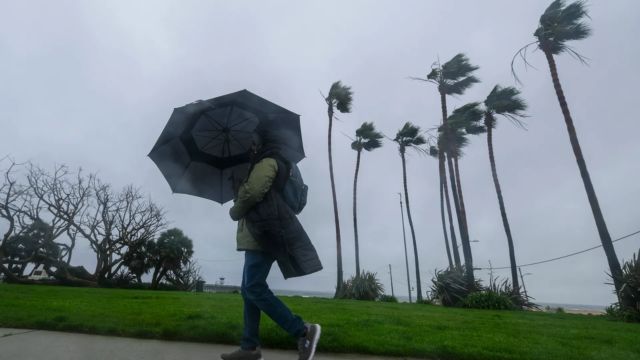A massive atmospheric river propelled by a “bomb cyclone” is pounding Northern California, bringing heavy rain, high winds, and dangerous surf conditions. The North Bay will bear the brunt of the storm, with 5-12 inches of rain forecast by Tuesday. Rainfall totals south of the Golden Gate will range from 1-6 inches, with the highest amount expected on Friday.
Flood Watches are in force for the North Bay until Saturday AM, as heavy rain floods streams and low-lying areas. Wind gusts of 45-50 mph triggered a Wind Advisory for the coastal and bayshore zones. Meanwhile, waves up to 22 feet triggered a High Surf Advisory till Friday.
Flooding, felled trees, and power outages are all potential hazards. Officials urge caution as storm impacts worsen.
A powerful bomb cyclone has slammed Northern California, bringing torrential rain, fierce winds, and widespread disruptions to the Bay Area and surrounding regions. This severe weather system, which rapidly intensified over the Pacific Ocean, made landfall early this morning, leaving a trail of destruction in its wake.
What is a Bomb Cyclone?
A bomb cyclone, also known as a “bombogenesis,” occurs when a storm’s central pressure drops dramatically in a short period of time. This rapid intensification leads to severe weather conditions, including extremely high winds, heavy rainfall, and even snow in mountainous areas. These cyclones are typically associated with powerful winter storms, and their sudden onset often catches residents off guard.
Impact on the Bay Area
As the bomb cyclone reached the Bay Area, it unleashed an intense mix of rain and wind, with some regions experiencing rainfall rates exceeding an inch per hour. Roads quickly became flooded, and urban areas were left grappling with downed trees and power lines. Several neighborhoods in San Francisco, Oakland, and other parts of the Bay Area reported significant street flooding as storm drains struggled to keep up with the overwhelming volume of water.
The winds, reaching speeds of up to 70 miles per hour in some areas, caused widespread damage. Fallen trees blocked roads, while roofs were torn off buildings and utility poles were snapped. The storm’s ferocity left tens of thousands without power, and many residents are still awaiting restoration of electrical service.
Flooding and Evacuations

In addition to the wind damage, the region is facing the threat of significant flooding. The National Weather Service issued warnings for both urban and flash flooding, especially in low-lying areas and regions prone to river overflow. Emergency services have been working around the clock to evacuate residents from flood-prone zones and to rescue those stranded by rising waters.
Local officials are urging everyone to stay indoors and avoid travel unless absolutely necessary. Several highways and bridges in the Bay Area are closed due to flooding or fallen trees, and transit services have been severely disrupted.
Environmental and Economic Impact
Martinez Woman Faces Charges for Threatening Neighbor with Gun and Bomb Over Parking Dispute
The bomb cyclone is also having a major impact on the environment and local economy. Rivers and streams are swollen, and reservoirs are quickly filling up, which, while beneficial for water supplies, also poses a risk of downstream flooding. The damage to infrastructure is expected to be extensive, with repair efforts likely to continue for weeks.
Farmers in Northern California are worried about the potential effects of the storm on crops, particularly in agricultural areas that are prone to flooding. Additionally, with power outages affecting businesses and homes, many are concerned about the economic fallout in the coming days.
Safety Precautions
As the storm continues its path across the state, authorities are emphasizing the importance of taking safety precautions:
- Stay indoors: Avoid venturing out unless absolutely necessary. If you must go outside, be aware of falling debris and avoid driving in flooded areas.
- Prepare for power outages: Charge your devices, have flashlights and batteries on hand, and keep an emergency kit with essential supplies, including food and water.
- Heed evacuation orders: If local authorities issue evacuation orders, follow them promptly to ensure your safety.
- Monitor weather reports: Stay updated on the storm’s progress through local news and official weather channels.
What’s Next?
The bomb cyclone is expected to move eastward over the coming days, but its impact will likely be felt throughout the rest of the week. Forecasters warn of additional rounds of heavy rainfall and strong winds, particularly in mountain areas where snow accumulation may pose its own set of hazards.
For now, authorities continue to work tirelessly to manage the fallout from this severe weather event, and residents are advised to remain alert and prepared for ongoing conditions. As the storm passes, the Bay Area will likely face a long recovery period, but the strength and resilience of its communities will help them bounce back from this extraordinary weather event.
Stay tuned for updates as more information becomes available, and stay safe during this intense weather event.

